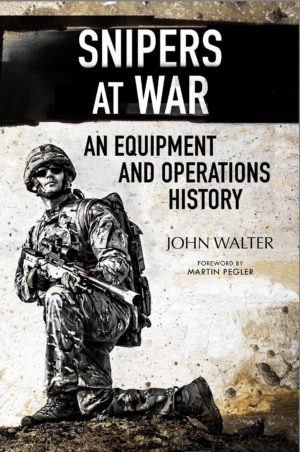Snipers at War: An Equipment and Operations History chronologically overviews snipers and their weapons of choice. It is an excellent examination of equipment but overlooks the operational and tactical employment of snipers.
The book briefly discusses Stone Age standoff tools and then the ‘first snipers’ who employed the bow, especially noting the impact of the crossbow at the battle of Hastings. Modern marksmanship principles are introduced with the musket, and Walter primarily focuses on their effectiveness. A notable example is Private Tom Plunkett’s 500m shot from a flintlock that killed French General Colbert-Chabanais in 1809. The author builds on this structure, contrasting snipers and their equipment across the colonial wars, Napoleonic age, the World Wars, Korea, Vietnam and contemporary conflicts.
Cons: Walter’s structure is hard to follow. He switches between equipment and snipers and creates a halting narrative. The epilogue overcomes some of these failings by presenting tactical considerations from training, to shot, and the aftermath. The reader would benefit by reading the epilogue first as a useful introduction to sniping. The book overemphasises accuracy and kill counts, overlooking the tactical considerations for employment and the benefits a sniper creates. As a sniper colleague of mine commented: ‘shooting is only 5% of the job’.
Pros: Snipers at War is an excellent book for the science of shooting. The detail of optics, internal ballistic science, rifles and snipers from the World Wars is engaging. The author’s enthusiasm and almost encyclopedic knowledge of weaponry is consistently reflected. One passage of note details that a German sniper’s method of identifying British officers in World War I was ‘looking for men with skinny legs and moustaches’. Finally, Walter’s reference list is useful for further reading, enabling Snipers at War to be a good start on the subject.
About the Author: Aaron Garnham is a currently serving officer in the Australian Army.

